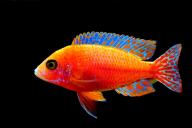Parrots tend to be one of the most social birds - they even keep this habit when being kept as pets!
In nature, parrots tend to live in groups, and they constantly socialize and communicate.
Let's find out more about how socialization works for these intelligent birds.

Flock Dynamics
In the wild, parrots form flocks, creating a social structure that promotes safety and cooperation.
Even as pets, they retain this flock mentality and consider their human caretakers as part of their extended flock.
Communication through Sounds
Parrots are excellent communicators and use a variety of vocalizations to convey messages.
From squawks to mimicking human speech, they express emotions, signal danger, or simply seek attention.
Body Language
Much like humans, parrots use body language to communicate.
Preening, head bobbing, and certain postures indicate their mood.
Understanding these cues helps in gauging their comfort and feelings.
Mimicking Behavior
Parrots are natural mimics, often imitating sounds and actions from their surroundings.
In a social context, this behavior helps them bond with their flock, reinforcing social connections.
Play and Bonding
Play is a crucial aspect of parrot socialization.
Whether engaging in games with other parrots or interacting with toys, playtime contributes to their mental stimulation and strengthens social bonds.
Mutual Grooming
Grooming is a social activity where parrots preen each other's feathers.
In a domestic setting, they may seek this interaction with their human caregivers, signifying trust and bonding.
Sharing Meals
Sharing food is a common social behavior among parrots.
It fosters a sense of community and reinforces social bonds.
Offering a variety of fresh and nutritious foods can enhance this aspect of their socialization.
Territorial Behavior
Parrots can be territorial, especially in the wild.
Understanding and respecting their need for personal space is essential to create a harmonious environment for social interactions.
Recently, we talked about puppy diet.













